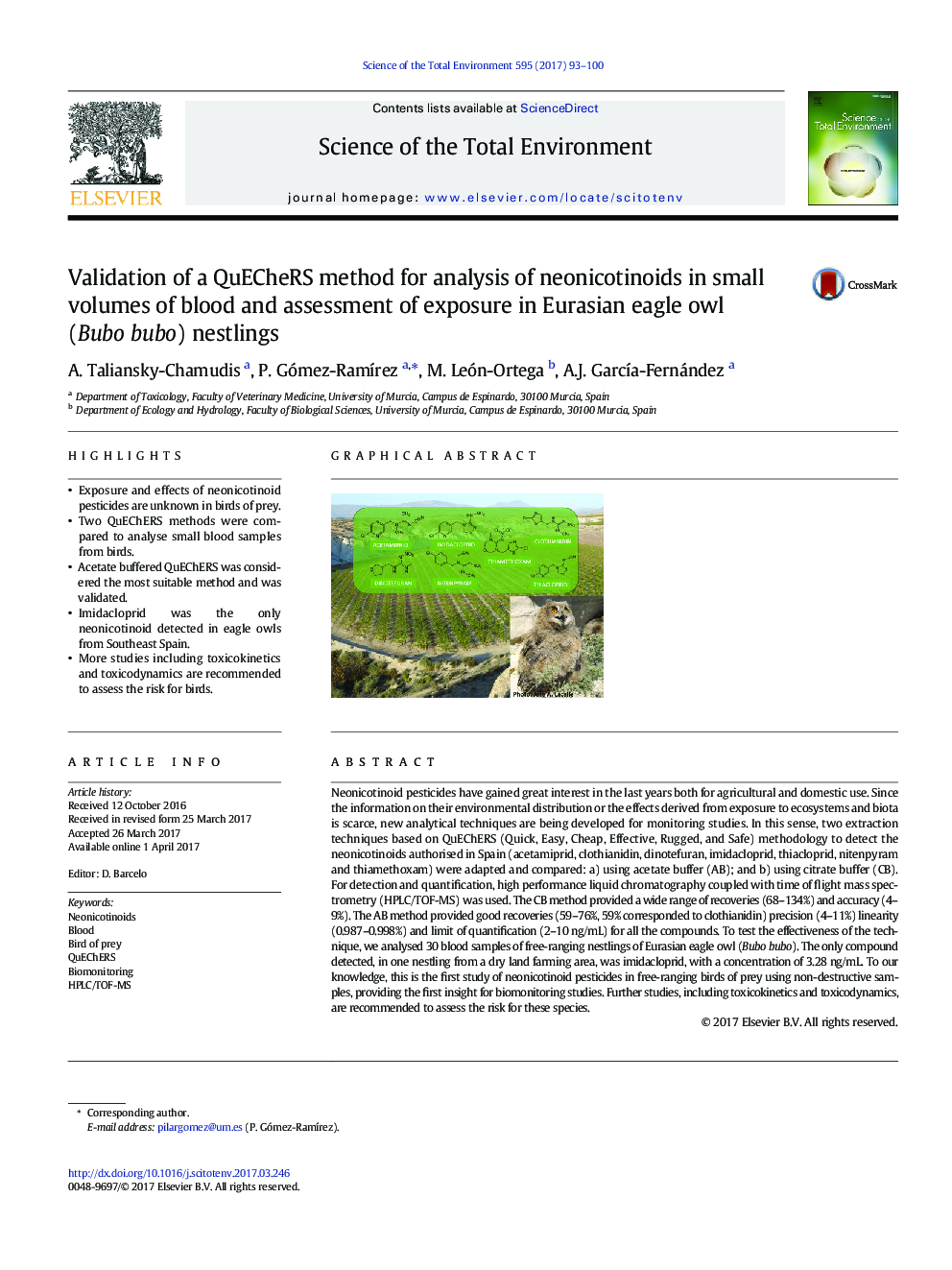| Article ID | Journal | Published Year | Pages | File Type |
|---|---|---|---|---|
| 5751266 | Science of The Total Environment | 2017 | 8 Pages |
â¢Exposure and effects of neonicotinoid pesticides are unknown in birds of prey.â¢Two QuEChERS methods were compared to analyse small blood samples from birds.â¢Acetate buffered QuEChERS was considered the most suitable method and was validated.â¢Imidacloprid was the only neonicotinoid detected in eagle owls from Southeast Spain.â¢More studies including toxicokinetics and toxicodynamics are recommended to assess the risk for birds.
Neonicotinoid pesticides have gained great interest in the last years both for agricultural and domestic use. Since the information on their environmental distribution or the effects derived from exposure to ecosystems and biota is scarce, new analytical techniques are being developed for monitoring studies. In this sense, two extraction techniques based on QuEChERS (Quick, Easy, Cheap, Effective, Rugged, and Safe) methodology to detect the neonicotinoids authorised in Spain (acetamiprid, clothianidin, dinotefuran, imidacloprid, thiacloprid, nitenpyram and thiamethoxam) were adapted and compared: a) using acetate buffer (AB); and b) using citrate buffer (CB). For detection and quantification, high performance liquid chromatography coupled with time of flight mass spectrometry (HPLC/TOF-MS) was used. The CB method provided a wide range of recoveries (68-134%) and accuracy (4-9%). The AB method provided good recoveries (59-76%, 59% corresponded to clothianidin) precision (4-11%) linearity (0.987-0.998%) and limit of quantification (2-10Â ng/mL) for all the compounds. To test the effectiveness of the technique, we analysed 30 blood samples of free-ranging nestlings of Eurasian eagle owl (Bubo bubo). The only compound detected, in one nestling from a dry land farming area, was imidacloprid, with a concentration of 3.28Â ng/mL. To our knowledge, this is the first study of neonicotinoid pesticides in free-ranging birds of prey using non-destructive samples, providing the first insight for biomonitoring studies. Further studies, including toxicokinetics and toxicodynamics, are recommended to assess the risk for these species.
Graphical abstractDownload high-res image (435KB)Download full-size image
